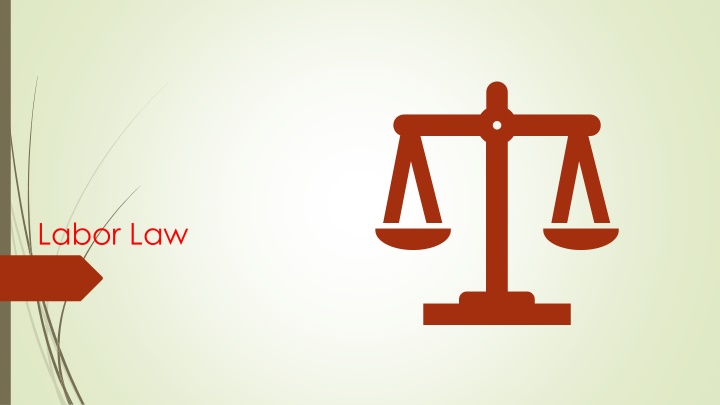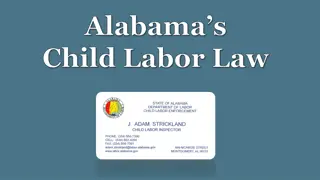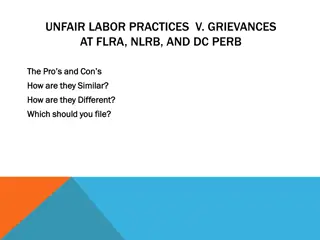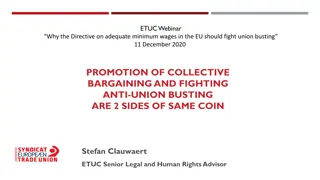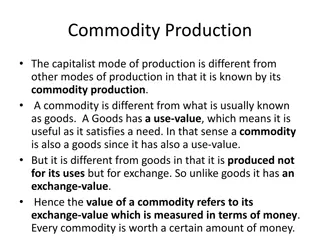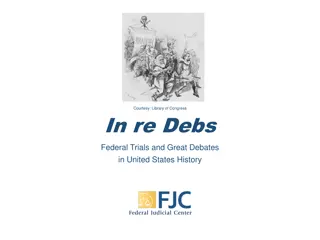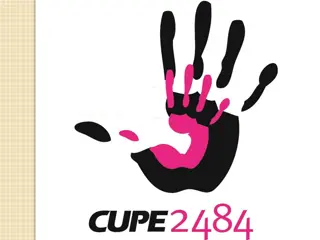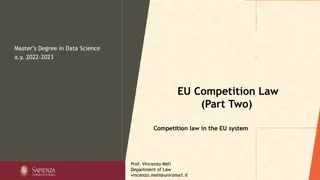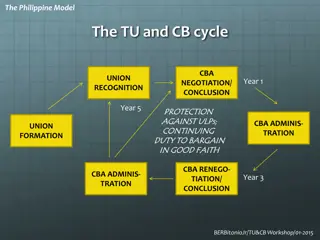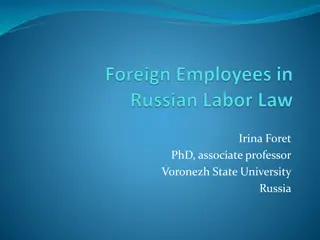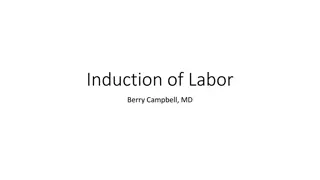Overview of Labor Law and Union Formation Process
Labor law governs the structure and operations of private labor relations in the United States. The National Labor Relations Act (NLRA) establishes the National Labor Relations Board (NLRB) to handle unfair labor practices in the private sector. The process of forming a union involves reaching out to a union organizing group, showing interest through authorization cards, and filing a petition with the NLRB for election. Employers may voluntarily recognize a union if there is majority support, leading to smoother contract bargaining.
Download Presentation

Please find below an Image/Link to download the presentation.
The content on the website is provided AS IS for your information and personal use only. It may not be sold, licensed, or shared on other websites without obtaining consent from the author.If you encounter any issues during the download, it is possible that the publisher has removed the file from their server.
You are allowed to download the files provided on this website for personal or commercial use, subject to the condition that they are used lawfully. All files are the property of their respective owners.
The content on the website is provided AS IS for your information and personal use only. It may not be sold, licensed, or shared on other websites without obtaining consent from the author.
E N D
Presentation Transcript
Governing Structure - Private National Labor Relations Act National Labor Relations Board (NLRA or The Act) (NLRB or The Board) Covers most private sector Excludes public sector and railway/airline industry Jurisdiction 5 Members Investigates Charge Prosecutes Complaints Adjudication Appointed by President for five (5) year terms Unfair Labor Practice Charges Quasi-judicial body Responsible for investigation and prosecution of unfair labor practice cases and supervision of NLRB field offices General Counsel ALJ conduct unfair labor practice hearings and issue recommended orders, which are subject to Board review
What is a Union? The Act defines a labor organization as: any organization of any kind, or any agency or employee representation committee or plan, in which employees participate and which exists for the purpose, in whole or in part, of dealing with employers concerning grievances, labor disputes, wages, rates of pay, hours of employment, or conditions of work.
Forming a Union The Organizing Process
Traditionally established by an authorization card or a union card Informal talking, sharing of ideas, concerns Reach out to Union Organizing group Showing of interest is a statement from an employee regarding union representation Example, a grocery store may have 4 different units/unions Bakery Bakery, Confectionery, Tobacco Workers and Grain Millers' International Union Retail Clerks United Food Commercial Workers Union Janitorial Service Employees International Union Stockers International Brotherhood of Teamsters Employers must post a Notice of Petition for Election File a petition with nearest NLRB Regional Office showing at least 30% of employees in a unit support the Petition. Smaller or micro units are permissible. Showing of Interest Jurisdiction Qualified union No existing contracts or recent elections NLRB agents will investigate for:
Voluntary Recognition Employer accepts a union after a majority showing of support Status as bargaining rep cannot be challenged during a reasonable period for bargaining (6 mo 1 year) Voluntary Recognition why? Avoids contentious election Can make Contract bargaining smoother lack of hard feelings Cemex, 372 NLRB No. 13 (Aug 25, 2023) If Employer commits a ULP during the election, an order to bargain will issue
Election Time, place, language, eligibility Employer must provide Union with contact information of employee Employer must post a notice of election Agents arrange an election agreement Both sides are afforded free speech rights and engage in a campaign Union campaigns started before the petition, involves taking with employees, holding offsite meetings, and explains the benefits of union representation Employer campaigns involves employee meetings, FAQs, and explains the process and the Employer s position on unionization Employer and/or Union campaign for votes No captive audience meetings 24 hours before election Peerless Plywood, 107 NLRB 427 (1953)
Certification If the union loses, the NLRB regional director certifies the election results. Results are subject to NLRB review. Union may opt to continue to pressure the employer to agree to a voluntary card check. If the union wins, the NLRB certifies it as the exclusive representative of the bargaining unit. Employer must bargain with the union
Collective Bargaining Union becomes representative for workers Collective Bargaining Agreement (CBA) Covers terms and conditions of employment Mandatory subjects: required by law Wages, hours, overtime, bonuses, safety practices, grievance procedures Permissive subjects: may be negotiated, but not required Illegal subjects: closed shops or illegal discrimination Two types Contract Effects
Implement final offer At impasse, notice to union Strike A refusal by employees to work Impasse Issues/Options Lockout Management shutdown of operations to prevent union employees from working
Allegations of Violating The Act. Against Employer or Labor Organization ULP Charge Investigated by Board agents Finding evaluated by Regional Director (may be reviewed by NLRB attorneys) Majority are settled, withdrawn, or dismissed by the Regional Director Sufficient Evidence Finding Attempt to facilitate a settlement Otherwise issues a complaint which leads to a hearing before an ALJ Remedies No penalties Reinstatement/back-pay Informational remedies Unfair Labor Practice Charges
